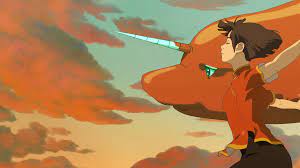Animation in Asia is experiencing a technical and creative renaissance thanks to the integration of cloud-based post-production services, also known as cloud producing. This approach has not only transformed the way animated films are created and rendered, but has also enabled Asian studios to compete globally with stories that highlight their mythologies and traditions.

In China, cloud rendering technology has significantly accelerated the production processes of animated films such as Big Fish & Begonia, Nezha: Birth of the Demon Child and White Snake: Afloat. According to Bian Jinwei of Light Chaser Animation, this technology allows optimizing times and maintaining high quality visual standards. For example, the rendering of White Snake: Afloat accumulated more than 252 million core hours, reducing production times by 43%. This is crucial in an industry where complex scenes, such as those in The Wandering Earth 2, used to take months of work.
The impact of cloud rendering is not limited to speed. The ability to handle high-performance computational resources enables levels of detail that impress global audiences. This technology has catapulted Chinese productions onto the international stage, where aesthetics and narratives based on traditional mythology resonate with diverse audiences.

The integration of traditional stories with advanced technology is a notable trend. Examples such as Big Fish & Begonia, inspired by Taoism, and Nezha: Birth of the Demon Child, based on Chinese mythology, bear witness to the potential of merging culture and technology. Japan, for its part, has brought to the cinema stories such as The Tale of the Princess Kaguya and The Summer of Coo, which rescue the spiritual connection with nature and ecology.
In China, the recent New Gods: Yang Jian continues to explore these mythological roots, showing that cloud rendering technology not only facilitates the creation of visually rich worlds, but also allows creators to tackle epic narratives with a depth never seen before.
Japan and China are leading the adoption of cloud producing in Asia, applying these technologies beyond animation.
Delta Electronics Japan, for example, uses cloud systems with artificial intelligence to optimize logistics and production operations. Its VORTEX platform enables real-time monitoring, remote supervision and detailed analysis that streamlines complex processes. This approach translates into greater efficiency and responsiveness in key sectors such as animation.
On the other hand, Huawei Cloud in China is transforming both video games and audiovisual content creation. Its artificial intelligence-driven Pangu model facilitates the creation of animated videos with consistent movements and facial features, overcoming previous technical limitations. In animation, this model reduces costs and time, and it lip-sync dubbing technology expands the boundaries of regional content.
Cloud producing is redefining the creative and production possibilities of animation in Asia. Studios such as Light Chaser Animation and technologies such as Huawei’s not only optimize processes, but also open the way for traditional mythologies to modernize and reach global audiences.
In a continent where cultural richness is infinite, the cloud has become the bridge that connects tradition and cutting-edge technology. The Asian animation industry is positioning itself as a benchmark of innovation, with stories that not only entertain, but also preserve and reimagine cultural heritage for future generations.







